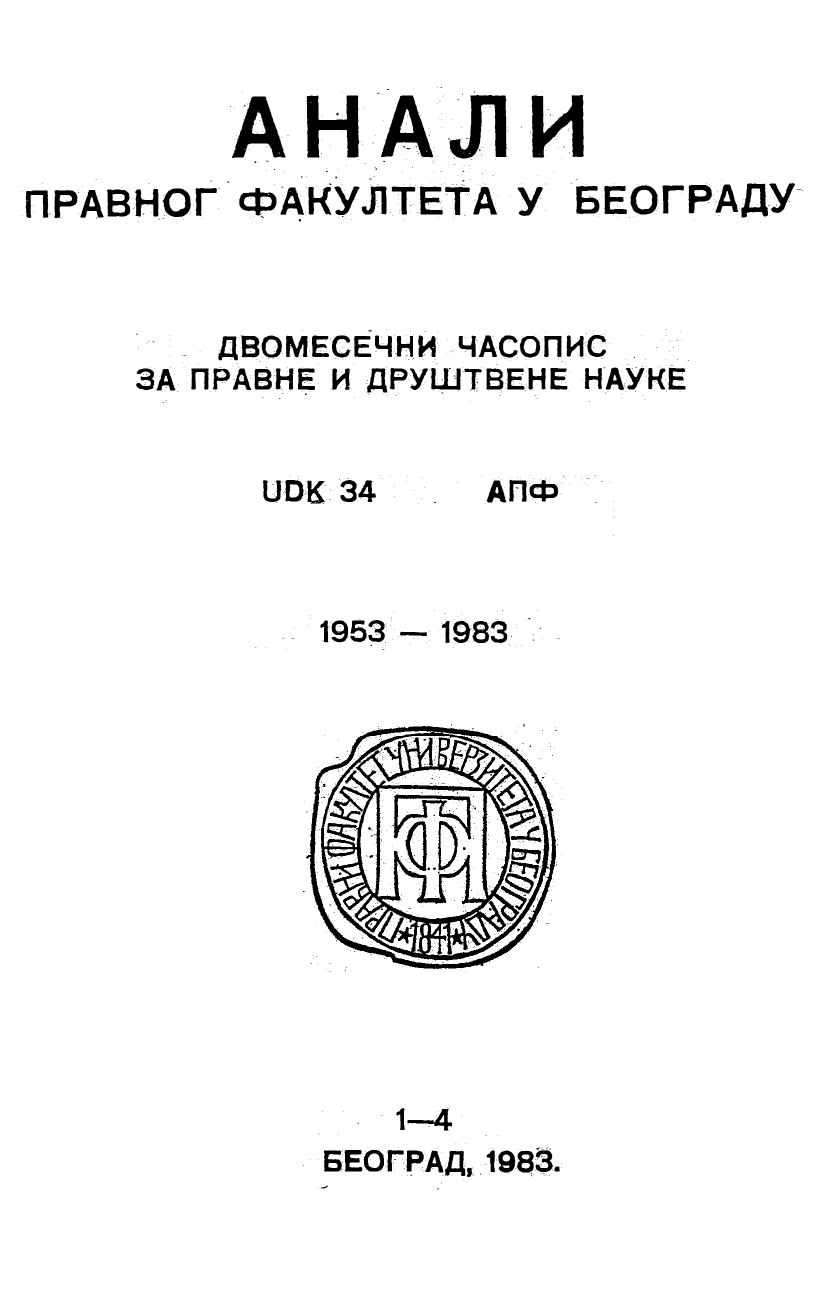О ГАЈЕВОМ ДЕЛУ RERUM COTTIDIANARUM SIVE AUREORUM LIBRI VII
ON GAIUS’ WORK „RERUM COTTIDIANARUM SIVE AUREORUM LIBRI VII"
Author(s): Obrad StanojevićSubject(s): Law, Constitution, Jurisprudence, Roman law
Published by: Правни факултет Универзитета у Београду
Summary/Abstract: The essay is the consequence of research the author has made of the personal life and works of Gaius, the results of which has made known in the monography ..Gaius Noster” — a contribution to the history of the Roman legal science, (which shall be published in French in Holland during 1983,). It deals with the works of Gaius, which have been, without justification, neglected, primarily because Gaius’s contribution (to science! and his originality over-all have been underrated, also, because this work has been left in the shadow of some better known Institutions. The author rejects the theses of Arangio-Ruiz, Guarino and others who have expresed doubt as to the authenticity of this work of Gaius. The individuality of style, the outline (scheme) according to which the work had been written, reflect the author of Institutions. The enigma: why had the compilators of the Digests only taken up the text of the first three commentaries, has been solved bj’ the author by departing from the presumption that the fourth and fifth commentaries spoke only about the law of inheritance, and the sixth and seventh about procedure. Separating the law of inheritance from the complex relating to property law, Gaius had improved the system of „tripartitio” which had been implemented in the Institutions for the first time. As indirect proof of this, he states the fact that nothing from Institutions relating to procedure had been used either (not one fragment of the fourth commentary/, while there are only five fragments dealing with the law of inheritance (although there are over 250 of them/; The presentation of these problems, given by this professor, too closely connected with history, the compilators have estimated as old-fashioned. Certain descrepancies between the Institutions and the „Res cottidianae” have been explained by the fact that Gaius had written the „Res cottidianae” at least fifteen years later, diverting from the solutions given in the Institutions, bearing in mind the novelties in law and doctrine (such as the new conception of the contract, the introduction of „variae causarum figurae”). Gaius had not only been the author of the dichotomy of obligations (contractus-delicta), which can be found in the Institutions, but also the divison into three (contractus-delicta-varie causarum figurae), and even into four (contractus-delicta-quasi ex contractu-quasi ex degico), which had been aptly observed by Diosdi.
Journal: Анали Правног факултета у Београду
- Issue Year: 31/1983
- Issue No: 1-4
- Page Range: 639-651
- Page Count: 13
- Language: Serbian

